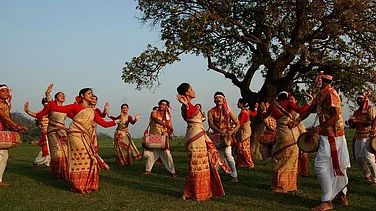It is during Ganesh Chaturthi that the vivid range of Indian culture and the skill of artisans are shown. Across the country, there are many types of Ganesh idols, each crafted with unique regional traditions and materials. Allow us to explore the various ways in which the Elephant God is brought to life, as interpreted in different parts of India.
Odisha: Where Filigree Meets Devotion

In Odisha, especially in cities like Cuttack and Puri, Ganesh idols are distinguished by intricate silver filigree work and traditional Odia attire. Inspired by 7th-century temple carvings, these idols are categorized into three classical forms, Asina (seated), Sthanka (standing), and Nrutya (dancing). Delicately crafted, they combine spiritual symbolism with artistic finesse, making Odisha’s idols a fusion of elegance and heritage.
Andhra Pradesh: Pioneers of Eco-Friendly Idols

In Vijayawada, artisans have embraced sustainability with remarkable passion. Using clay, turmeric, neem, and natural dyes, they craft idols that are both spiritually significant and environmentally conscious. These minimalist designs emphasize simplicity over extravagance, placing Andhra Pradesh at the forefront of India’s green Ganesh movement. For more detailed insights on how you can contribute to sustainable celebrations, read our guide on How To Celebrate An Eco-Friendly Ganesh Chaturthi 2025: A Complete Guide.
Maharashtra: The Cultural Powerhouse

Maharashtra is the cultural powerhouse of Ganesh Chaturthi, and its idol-making traditions are iconic. The village of Pen is well-known for its tradition of making idols, with many of them being large and artfully painted from clay and Plaster of Paris. These statues are found in the temple, giving an idea of how deep the religious devotion of the state’s people is.
Tamil Nadu: Echoes of Dravidian Aesthetics

Dravidian culture is strongly seen in the way Ganesha idols are made in Chennai and its surrounding towns. The idols often wear ornamental headpieces, use mild colors, and have temple-style engravings. They are made with human materials such as clay, paper-mâché, and Plaster of Paris. They blend the idea of religion with the refined sophistication found in the South.
Gujarat: Colorful and Contemporary

Cities like Ahmedabad and Surat have a lot of bright and energetic idols. Here, artisans aren't afraid to experiment with vivid fabrics, beads, mirrors, and modern materials. The result is a bright mix of traditional and new styles that attracts young people and still keeps the original meaning of the festival.
Karnataka: Idols of Balance and Harmony

In Bengaluru and other places in Karnataka, people enjoy looking at the idols of Lord Ganesh because they are made with a careful symmetrical shape, look beautiful with natural colors, and have nice little details. Made with local materials, these idols are not as fancy-looking, but they still have a lot of meaning for the culture. They often show Lord Ganesha in a calm and thoughtful way, which also shows how a bit of that spirit is found in the state’s art and culture.
Rajasthan: Regal Representations
Jaipur, the royal heart of Rajasthan, lends its flair for grandeur to Ganesh idol-making. With materials like marble and clay, the idols are painted in vibrant hues and decorated using traditional Rajasthani motifs and designs. These idols carry a majestic presence, capturing the splendor of royal devotion.
West Bengal: A Subtle Sculptural Signature

While Kolkata is known for Durga Puja, local artisans also make Ganesh idols carefully and make sure they look neat and beautiful too. Sculptors from areas like Paralakhemundi make clay idols with kind faces and big eyes, giving their work a lot of the style people find in Bengal art. The result is a gentler and more sophisticated portrayal of the deity, one that often conveys the feeling and mood that you usually see in Bengali art.
Goa: Grounded in Earth and Community

In the serene village of Kumbharwada in Mayem, Goa’s artisans craft idols with locally sourced clay and natural pigments. Months are spent perfecting each piece, ensuring the sculptures are both visually stunning and environmentally friendly. The idols here reflect community-oriented craftsmanship and traditional Goan values of simplicity and sustainability.
A Celebration of Cultural Plurality
From the royal finishes of Rajasthan to the minimalist ethics of Andhra Pradesh, every Ganesh idol is a tribute, not only to Lord Ganesha but also to the unique identity of its place of origin. Whether draped in vibrant beads or shaped from earth-toned clay, each idol is a piece of living culture. To see these incredible idol types and traditions showcased in their full glory, plan a visit to some of the most famous community celebrations across the country, detailed in our guide: India's 8 Most Famous Ganesh Chaturthi Pandals To Visit (2025).
As the festival approaches, selecting a Ganesh idol becomes more than a spiritual choice, it’s an opportunity to celebrate India’s artistic unity in diversity.
Ganpati Bappa Morya!
Frequently Asked Questions (FAQ)
1. What are the main materials used for making Ganesh idols?
Traditionally, Ganesh idols are made from natural clay (Shadu Mati). However, other materials include Plaster of Paris (PoP), which is now discouraged for environmental reasons, as well as paper-mâché, turmeric, marble, silver, and other metals.
2. Why is an eco-friendly Ganesh idol important?
Eco-friendly idols are made from biodegradable materials that dissolve harmlessly in water. Plaster of Paris idols do not dissolve easily and release harmful chemicals from their paints into rivers and lakes, damaging aquatic ecosystems. Choosing a green idol is a way to celebrate responsibly.
3. What is the significance of the direction of Ganesha's trunk?
An idol with a trunk turning to the left (Vamamukhi) is believed to represent calmness, peace, and happiness and is generally preferred for homes. A trunk turning to the right (Dakshinmukhi) is believed to hold immense power and requires more specific, rigorous rituals.



























